10 Proven Ways to Deliver Excellent Customer Service


Customer service defines how people perceive your brand. For 96% of customers, it is the reason they choose to stay loyal—even when the product itself is not perfect.
Yet, many businesses still fall short. Delayed responses, hard-to-reach support teams, and generic replies frustrate users and break trust.
The good news is that improving customer service does not require a complete overhaul. Simple actions such as faster replies, clear communication, and respectful support can make a noticeable difference.
In this blog, we will share 10 practical ways to improve customer service. Each one is actionable, easy to implement, and focused on helping you build stronger, more loyal customer relationships.

Excellent customer service means solving problems without adding effort for the customer. People don’t want to wait, repeat themselves, or get vague responses. They want to feel understood—and get what they need with as little hassle as possible.
Whether someone is chatting with AI bot, reading a help article, or speaking to a human, the expectation stays the same: fast replies, clear answers, and respectful communication.
Most customers are happy to help themselves—until they can’t.
That’s when real support is need. The best teams use AI for speed and human support for care, making sure customers don’t have to bounce between channels just to get help.
Great service isn’t about doing more. It’s about making every step easier. That’s what earns trust—and keeps people coming back.
In 2025, customer expectations are higher than ever—and patience is lower. If your support feels slow, unhelpful, or disconnected, customers won’t wait around.
What’s Changed?
Some of the reasons are:
73% of customers have switched brands after a multiple bad support interaction. That’s not a one-off. It’s a pattern.
Good support builds trust. And trust drives retention, mouth of words referrals, and long-term growth. When customers get fast, accurate answers—without friction—they stay loyal and share their positive experiences.
There are many ways to improve customer service. Tools like YourGPT, shared inboxes, and chat systems help make support faster and more organized. But tools alone aren’t enough. What matters is how you use them to respond clearly, solve problems, and make customers feel supported.
The list below shares 10 practical ways to deliver better service. Each one is simple, useful, and focused on helping your team build stronger connections with customers.
Customers want answers that make sense and fix the problem. They don’t want to be passed around or hear, “I’m not sure.”
To give clear support, you need to understand the product well. This includes how it works, what it’s used for, and what issues come up most often. When you know the product, you can explain things simply, spot problems quickly, and offer helpful suggestions.
Good support isn’t just about solving a problem—it’s about helping people get the most out of what they’ve already paid for. Learning the product well makes every response faster, more accurate, and more useful.
People reach out in different ways. Some start with live chat. Others prefer email, social media, or messaging apps. Being available across these channels makes it easier for customers to get help without changing how they usually communicate.
When customers can choose how to contact you, it saves them time and lowers frustration. They get support in a way that feels natural to them.
Tools like AI help keep the conversation connected, even if it moves from live chat to email or another channel. This means customers don’t have to repeat themselves, and your team can stay focused on solving the problem. Meeting customers where they are leads to faster support and a smoother experience.
Customers want support that’s both quick and useful. A fast reply is helpful, but only if it leads to a clear solution.
Start by acknowledging the message. A short response or well-written autoresponder can let the customer know you’re working on it. But don’t stop there—follow through with a real answer that solves the problem.
It’s also important not to rush the conversation. Make sure the issue is fully resolved before closing it out. A clear answer and a proper follow-up leave a better impression than a quick reply that misses the point.
Speed matters, but resolution is what builds trust.
Customers often reach out when something isn’t working. A steady, respectful tone can help ease frustration and keep the conversation productive.
Most support happens through chat or email, where tone is easy to misread. Without body language or facial cues, even a short message can sound cold. That’s why your choice of words matters.
Keep your tone friendly and clear. A small change—like adding a polite phrase or a well-placed emoji—can make your message feel more human. If a conversation starts to feel tense, switching to a call can help clear things up faster.
A positive attitude doesn’t mean forcing cheerfulness. It means being patient, calm, and focused on helping. That’s what builds trust.
Customers expect you to remember past conversations. If they’ve reached out before, they shouldn’t have to explain the same issue again.
Using data from your CRM or chatbot history helps you see what the customer has already shared—like recent orders, previous support tickets, or preferences. This makes your response faster and more relevant.
Personalizing your reply also means adjusting how you communicate. A new customer may need more guidance. A returning one may just want a quick update. When responses match the customer’s needs, support feels more helpful and less repetitive.
Context shows that you’re listening. And that’s what builds trust.
Customers often look for answers before reaching out. If those answers are hard to find or unclear, they’ll get frustrated and leave—or flood your support team with repeat questions.
A clear, searchable knowledge base helps people solve problems quickly. Articles should be easy to understand and organized by topic, so customers don’t waste time digging.
You can also use chat widgets that suggest helpful content based on the page someone is viewing. AI tools can answer common questions right away, without needing a live agent.
The goal is simple: make sure customers can find what they need, when they need it, without extra steps.
Customers rely on your word. If you say a feature will launch, a reply will come within a day, or an issue is being fixed, they expect it to happen.
Missed deadlines or broken commitments can cause frustration. The best way to handle it is to be upfront. Share what went wrong, why it happened, and what steps you’re taking to make it right.
It also helps to be open about changes. Posting updates, delays, or known issues in a public place shows that you’re taking responsibility and keeping people informed.
Clear communication during setbacks builds more trust than silence. Customers value honesty, even when the news isn’t perfect.
Support is faster and more helpful when agents have the right information in front of them. Switching between systems or looking for missing details slows things down and adds frustration for both the team and the customer.
A single view that includes conversation history, past issues, and relevant notes helps agents stay focused and respond with context. This makes answers more accurate and reduces the need for back-and-forth.
AI tools can also help by drafting replies or summarizing long conversations, especially during busy times.
Along with context, agents need access to internal resources—like how-to guides or escalation steps—so they can handle issues without delays. The right tools make it easier to support customers well.
Customer feedback helps you spot what’s working and what’s not. But it only matters if you do something with it.
Build simple feedback steps into your support process. Use tools like CSAT, CES, or NPS to collect responses after chats, calls, or emails. These small moments give you a clear view of the customer experience.
Review feedback regularly—not just once in a while. Look for patterns and share what you find with product, sales, and leadership. This keeps everyone aligned and focused on solving real problems.
Feedback is more than a score. It’s a chance to improve how your team supports customers every day.
Great service doesn’t wait for a question—it looks for ways to help before one is asked.
Customers may not always know what to ask or what they need. By paying attention to the situation, you can offer solutions that save them time or prevent future issues.
This could be as simple as pointing out a helpful feature, sharing a quick tip, or following up with useful information. Even small gestures, like a thank-you note or a personalized offer, can leave a lasting impression.
Being proactive shows that you’re paying attention—and that builds trust over time.

AI can help you respond faster, suggest answers, and reduce workload. But customer satisfaction still depends on how your team handles the conversation. These five qualities remain essential—whether support is AI-assisted or fully human.
AI can draft a response—but only agents can judge if it fits. Listening carefully helps human agents pick the right reply and adjust when AI gets it wrong.
AI drafts save time—but they still need clarity. Good service means short, useful responses, written in plain language, no matter who writes the first draft.
AI doesn’t always understand urgency. That’s where the human-in-the-loop matters. When AI responses miss the context or escalate frustration, calm, focused agents step in—correcting the flow and recovering the experience.
Product knowledge now includes knowing how to use AI suggestions, documentation, and internal tools. Confidence isn’t just about memory—it’s about finding and validating answers quickly.
AI can suggest an initial answer. Great service happens when agents follow up, confirm resolution, and close the loop. That’s how trust is built.
When these qualities are applied alongside smart tools, the result is faster resolution, better accuracy, and higher CSAT—at scale.
Great customer service is not a department responsibility. It’s the outcome of a well-aligned team.
From browsing the website to post-purchase support, every touchpoint shapes the customer’s experience.
A confusing UI? Customers ask support, but the product team holds the fix. A shipping delay? Support handles complaints, but logistics owns the root cause. When teams collaborate instead of working in silos, the customer gets faster answers and fewer runarounds.
This cross-team alignment does more than improve service—it builds trust. When real customer feedback is shared and acted on, issues don’t just get answered, they get solved. That shows users you’re listening, improving, and serious about getting it right.
Support teams bring the experience. Product and ops bring the expertise. Leaders create authority by fixing issues at the source. That’s how long-term trust is built—and why customers stay.
Excellent service is fast, clear, and respectful. It solves problems without creating new ones and leaves the customer feeling supported from start to finish.
Make it easy to get help. Respond quickly, avoid asking customers to repeat themselves, and keep context across channels like chat, email, and phone.
When agents know the product well, they can explain features clearly, solve problems faster, and guide customers with confidence.
Tone sets the mood. A calm, respectful tone—especially in live chat or email—helps reduce tension and builds trust, even during tough conversations.
Use tools that show past interactions, orders, or preferences. This allows agents to respond with context and avoid repeating steps the customer has already taken.
Proactive support helps customers avoid problems before they happen. It shows you’re paying attention and adds value without being asked.
Answers should be easy to find, clearly written, and organized by topic. Use simple language and keep articles updated as the product evolves.
AI speeds up support by answering common questions, drafting replies, and routing requests. It gives agents more time to handle complex issues.
Every team affects the customer experience. Sharing feedback and fixing root problems across departments leads to fewer issues and faster solutions.
Start with faster response times and better training. Make sure every reply focuses on solving the problem—not just closing the ticket.
Consistent customer service supports steady growth. It helps retain customers, reduces churn, and builds trust over time—without relying only on new sales.
The strategies outlined above are simple but effective. They focus on clear communication, quick follow-up, and treating customers with respect at every step.
Using tools like YourGPT helps teams apply these practices across channels. Features like live chat, AI-powered suggestions, and shared conversation history make it easier to stay on track and respond with context.
But tools alone aren’t enough. Good service requires a shared approach. Everyone on the team should understand how their work affects the customer—whether they answer tickets or build the product.
Strong service habits lead to better conversations, fewer repeated issues, and more satisfied customers. When that becomes part of how your team works, growth becomes a result—not a goal.
Join thousands of businesses using AI Chatbot to automate support and boost engagement.
No credit card required • Full access • Cancel anytime

Shopify stores often use a chatbot on their website to handle product questions, order updates, and support. But customers also message on WhatsApp expecting the same quick answers. Most of them already use WhatsApp throughout the day, so reaching out there feels natural. A chatbot that works across both channels responds in seconds, guides purchase […]

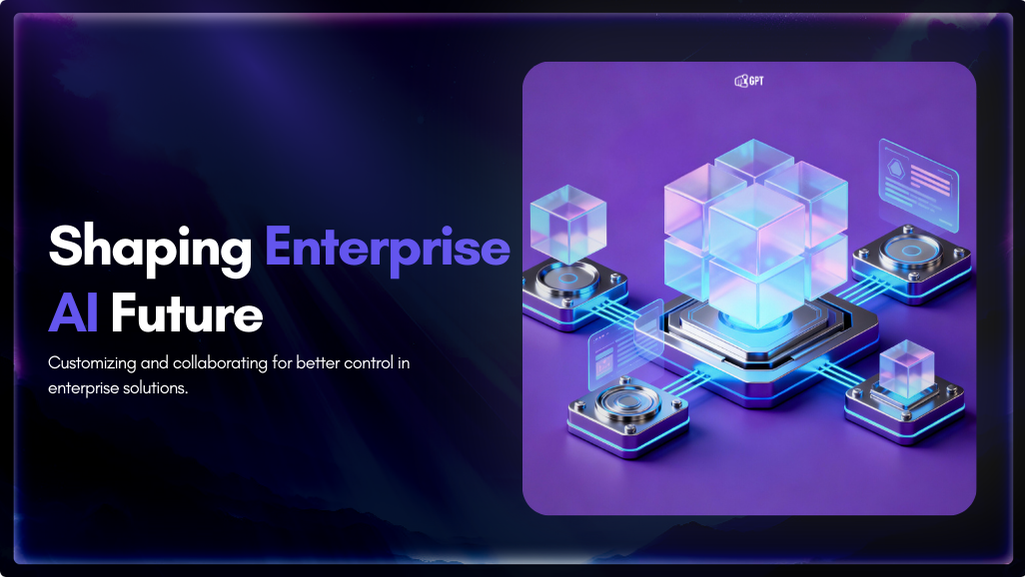
Artificial Intelligence has advanced quickly over the past five years, moving from an experiment to a standard component of modern business. AI has become a central part of enterprise strategy. 88% of organizations are now using AI. This figure has increased from 78% the year before. This transformation is reshaping how companies run, communicate, and […]

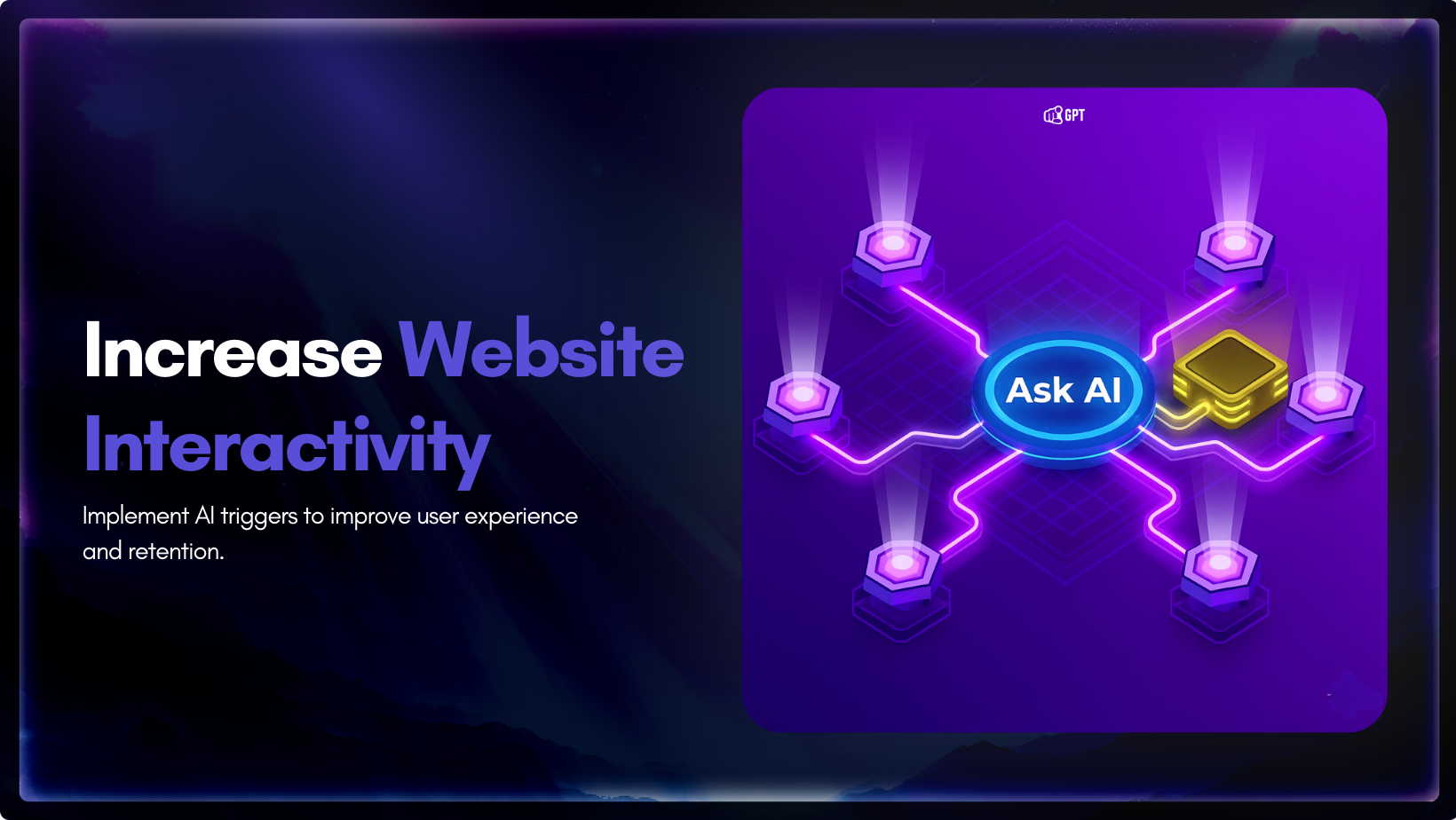
You invest time writing your website copy. You explain features, pricing, and how everything works. The information is there. Still, some visitors leave without clarity, and small gaps in understanding often stop them from moving forward. This happens because a static page cannot adjust to what they want at that moment. They skim a section, […]

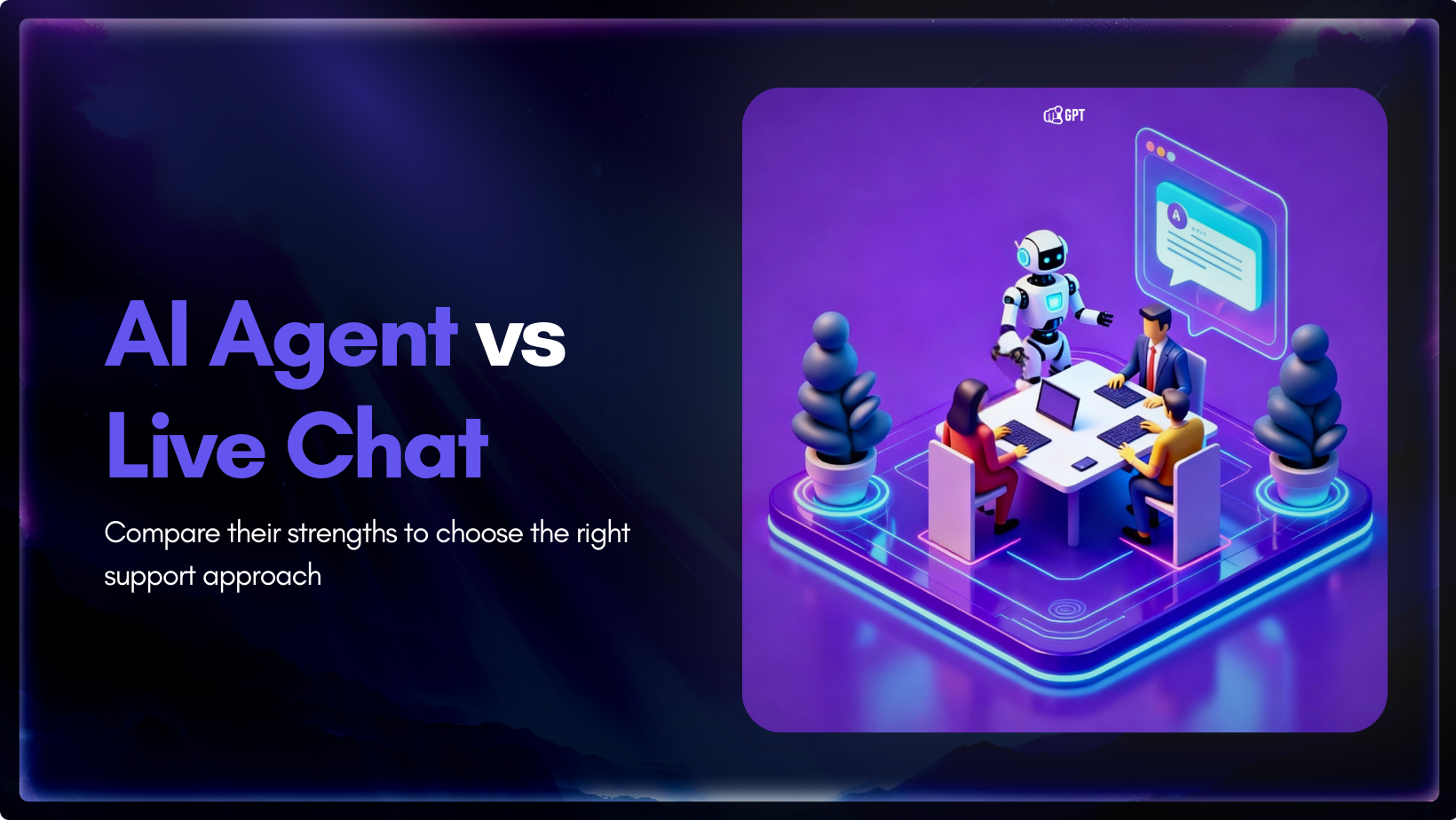
AI agent and live chat each play a different role in customer support, and the choice between them influences how a team handles growth. Companies are moving toward faster support models, and one clear trend is the use of AI to reduce operating costs by up to 30%. The difference shows up when ticket volume […]

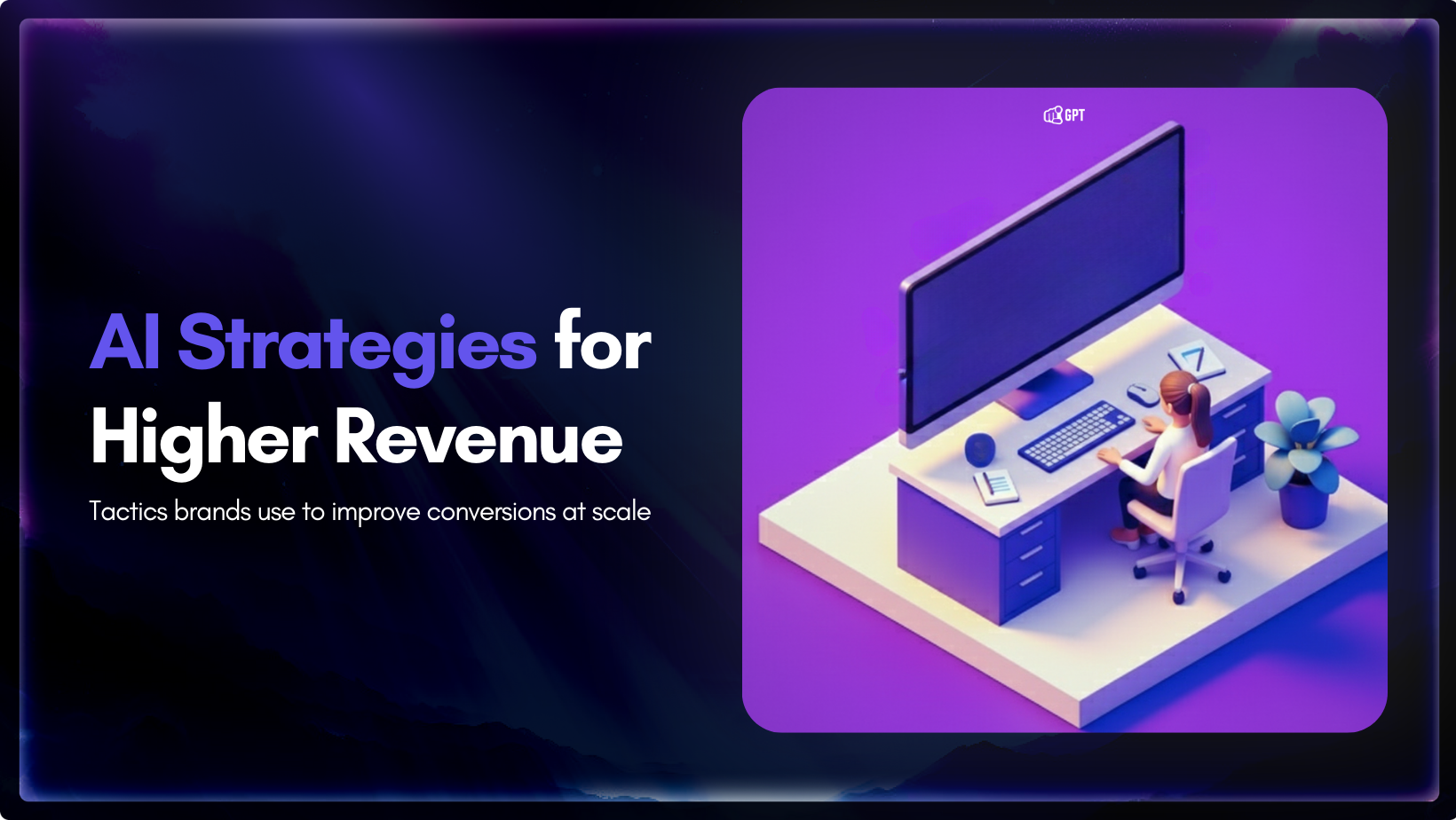
You have definitely heard about the use of AI in marketing. But have you ever seen or learned how it can actually drive revenue? Well, firms using AI in marketing and sales report significant benefits. According to a recent study by McKinsey & Company, revenue increases from AI show up most in marketing and sales, […]

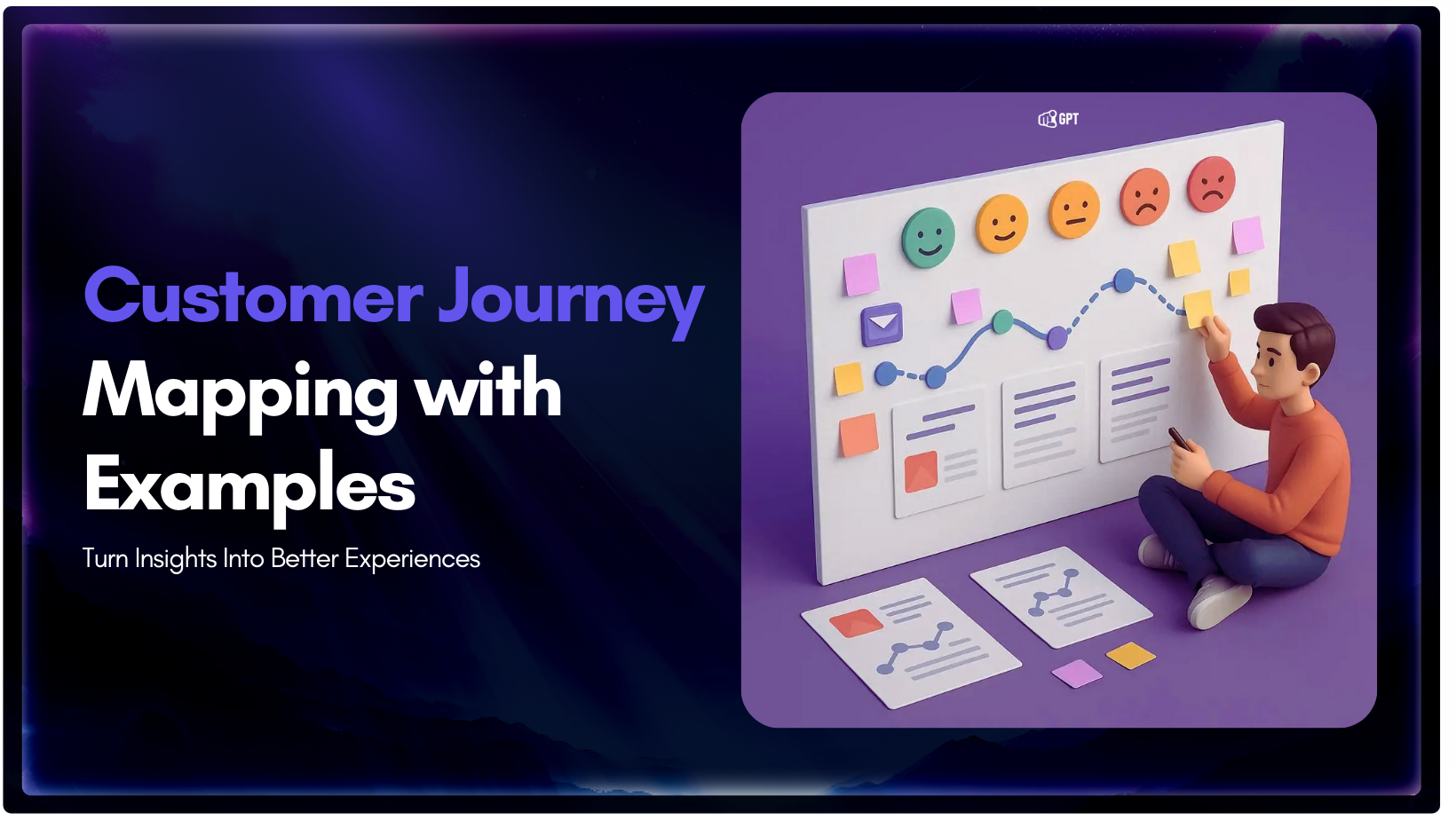
Every business talks about improving customer experience, but many struggle to understand what that experience actually looks like from the customer’s side. This is where a customer journey map becomes essential. It is a practical way to see how people discover your brand, evaluate their options, make a purchase, and decide whether to come back […]
